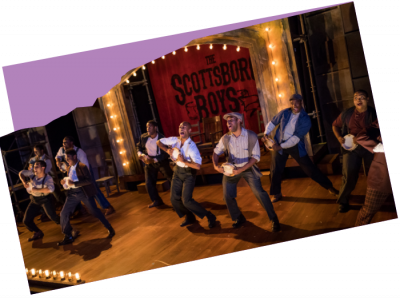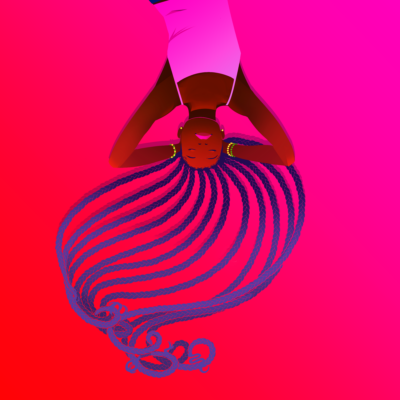Your donation sets the stage for a new season of Boston's most intimate, entertaining and provocative plays and musicals. Our shows make powerful connections with our audiences-- and they are only possible because of you.
Confronting the Legacy
Confronting the Legacy
Confronting the Legacy: The Scottsboro Boys and Minstrelsy
Helen Deborah Lewis, Ph.D., The Boston Conservatory
Minstrelsy is not alone. The history of American popular entertainment includes countless stereotypes of specific ethnic and immigrant groups. Though black people were not the sole victims of artistic mockery—the drunk Irishman and money-grubbing Jew were among some of the other theatrical stereotypes—the minstrel tradition became, unfortunately, one of the most iconic theatrical genres in our history.

The origins of American minstrelsy are hotly debated, but scholars have settled on three major figures from the 1830s as the first practitioners: Thomas Dartmouth “Daddy” Rice, George Washington Dixon, and William Henry Lane. A white man performing while donning a grotesque clown mask of smeared burnt cork (what became known as “blackface”), Rice performed a so-called imitation of an enslaved man of color, a song and dance routine called “Jump Jim Crow,” which originated in the early 1830s. This would become one of the most famous songs in minstrelsy and one of the most well-known acts of the century in the United States. Dixon, also a white actor, is credited for originating the “Zip Coon” character, derived from a song of the same name about a “freed slave” who attempts to imitate his white “betters.” Lane, an African-American performer, became famous as “Master Juba” in the 1830s for performing what was known as the “Juba dance,” a percussive dance involving stomping, clapping, and slapping the face, arms, and legs, which he performed in music halls, variety acts, and touring minstrel shows. Lane is considered one of the first performers of color to entertain a white audience in the United States. These three performers were responsible for influencing the development and evolution of what would become the minstrel show, the most popular form of entertainment in the United States from the 1830s until roughly the mid-20th century.

At its peak popularity, famous troupes such as the Virginia Minstrels and Christy Minstrels promoted what is considered the consummate minstrel show: a performance that included skits, songs, dances, and comedy acts, all performed in the requisite “blackface,” used by both white and black actors. The show romanticized plantation life and objectified a stock cast of characters all representing a different “type” of individual of color. The featured characters included the Interlocutor, the role typically played without blackface serving as the emcee of the evening; Tambo and Bones, the comical “endmen” flanking the “straight man” Interlocutor; and the other performers/musicians forming a semicircle on the stage. The structure of the minstrel show changed over its history, but in its heyday, the standard arrangement of acts was an introductory song-and-dance routine; the olio, a series of variety entertainments performed by different members of the cast; and the afterpiece, either a prolonged skit about life on the plantation or a farcical burlesque of a popular play or operetta.
By the time Hollywood hit its golden age in the 1930s and 1940s, minstrelsy as live entertainment had become obsolete, but its legacy was palpable in American culture. Popular musical films such as Babes on Broadway (1941), Holiday Inn (1942), and White Christmas (1954) featured numbers that sentimentally extolled the minstrel show. 1940s media, including radio shows like Amos ‘n’ Andy and Two Black Crows, and popular films like Disney’s Song of the South, employed an ethos derived directly from the 19th-century minstrel tradition. Even in the last few decades, some demeaning stereotypes of African-American people in film, television, theatre, and stand-up comedy shows allude to minstrel archetypes. Artists like Spike Lee (Bamboozled) and here, Thompson, Kander, and Ebb, strive to confront the legacy of minstrelsy by facing it head-on. The Scottsboro Boys forces the audience to encounter our often bigoted theatrical history and reflect on its larger social context – a particularly poignant demand in today’s America.
 Past Productions
Past Productions JAJA’S AFRICAN HAIR BRAIDING
JAJA’S AFRICAN HAIR BRAIDING




